Contributed by Michelle Stirling, Communications Manager for Friends of Science Society.
On Saturday, November 5, 2016, thousands of people across Alberta spoke up and signed petitions against the Alberta Climate Plan, the carbon tax and coal phase-out. Many of thousands of others could not be at the rallies – they were out in the field harvesting the food that you and I rely on to eat. But they were there in spirit and they will be signing the petition.
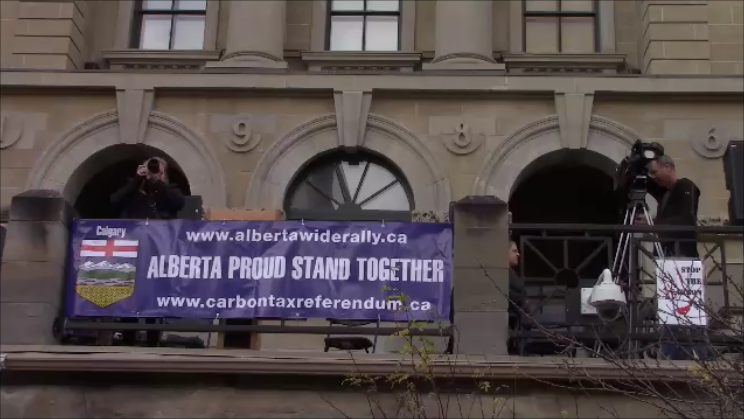
Calgary banner at MacDougall Centre.
Reported figures from Alberta Wide Rally are:
“8-9,000 in attendance
7-8000 signatures
Hundreds of volunteers wanting to help with petition drive
Next step for the “Alberta Wide Rally ” movement is to organize petition committees in every hamlet, village, town and city in the province. We’re actively seeking volunteers.”
Calgary rally attracted more than 800 people; protestor with signs.
Lethbridge rally attracted 300 people.
Video of phasing out coal electrical plants and replacing lost coal generation with ineffective and costly renewables https://youtu.be/UI6ipel6qQk
Most of the people at the rallies were concerned about energy policies. The carbon tax sounds innocuous when described as ‘revenue neutral.’ It sounds to some like a benefit – when the government suggests the rebate will be substantial to those below a certain income level. But few people appreciate the cumulative nature of this tax, which, as economist Ross McKitrick and others have pointed out, should only be applied if other taxes are relieved. Further, how can the tax be described as ‘revenue neutral’ when most of the tax will be paid out as subsidies and for transit expansion, both of which are expenditures, not tax reductions? It is not ‘revenue neutral’. The carbon tax is a vehicle to subsidize crony ‘green’ capitalists for building solar and wind farms to produce intermittent, costly power, or will be used for other pet government projects.
Likewise, the “Social Costs of Carbon” – the term used to describe the carbon tax, is based on skewed accounting. Environmental groups claim that a number of catastrophic climate events are on the rise, but the evidence does not show that. The one economic climate change accounting model that uses an actual cost-benefit analysis shows there is significant financial and societal benefit from the use of coal, natural gas and oil – and little irreparable damage.
Business and government policies are decided based on evidence-based cost-benefit analysis. Why are climate policies and carbon taxes based on predicted costs and crystal ball projections by doomsday ‘climateers’ seeking donations from you to ‘stop climate change’ or ‘global warming’ …that mostly happens naturally; with nominal human impact.
https://judithcurry.com/2014/01/16/senate-epw-hearing-on-the-presidents-climate-action-plan/
In fact, there has been no increase in hurricanes, tornadoes or droughts over the last 35 years and warming makes storms less severe. Increasing CO2 has caused a greening of the earth equivalent to adding a green continent twice the size of the continental USA.

http://www.nasa.gov/feature/goddard/2016/carbon-dioxide-fertilization-greening-earth/
Claims that global warming causes more wildfires is also not supported by the evidence. The Flat Top Fire Complex Review of the Slave Lake wildfire showed that Alberta’s tinder dry, aging conifers put us at a cyclical risk of fire. Last year’s mild winter and natural El Nino and Pacific Decadal Oscillation (two natural, powerful weather forcings) led to extremely dry conditions in May. Compare the maps below. These naturally occurring factors will not be stopped by carbon taxes.

May 4, 2016 fire danger map.
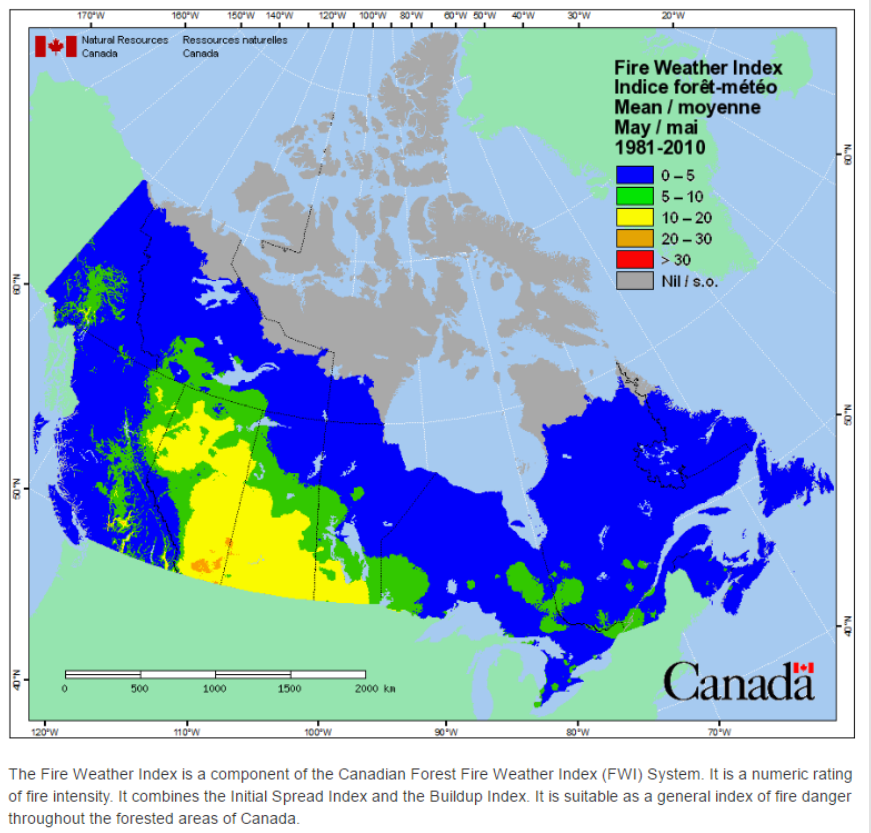
Map of 30 year mean for fire danger conditions May 1961-2010.
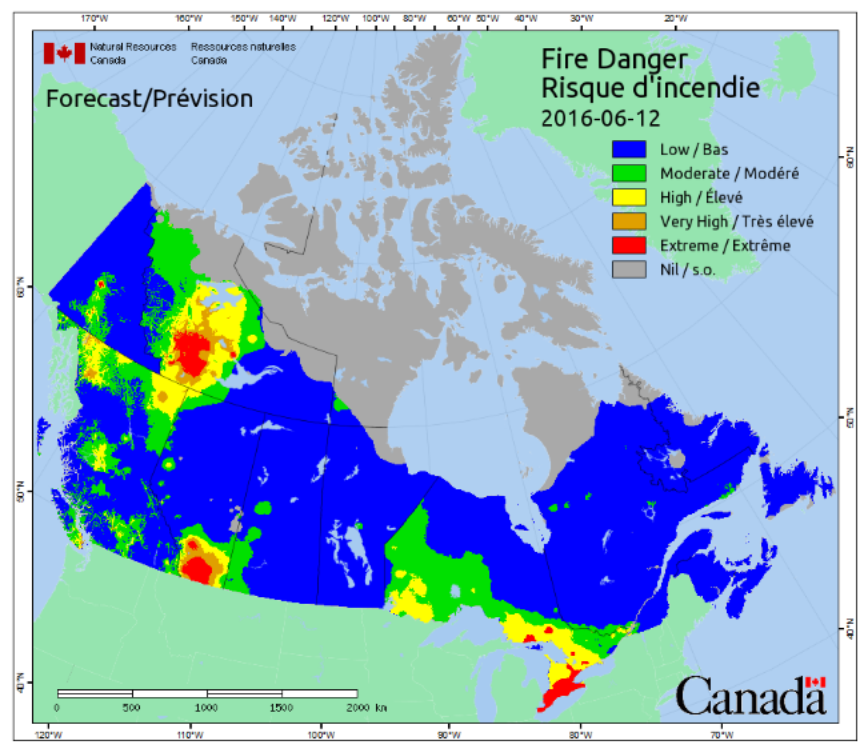
June 12, 2016 fire danger map shows the situation after spring rains.

May wildfires are common in Alberta during the gap between snow-melt and spring rain.
Earth has naturally warmed in the past – a few times. An example is the Medieval Warm Period (850-1250) when civilization flourished as harvests were bountiful and as the Intergovernmental Panel on Climate Change (IPCC) reports, temperatures were about the same as today. That warm time was followed by a naturally caused Little Ice Age, a 500-year cooling cycle, fraught with wild, unpredictable weather, crop failures, famine, social chaos and where thousands of people, deemed to be witches, were burned at the stake for the alleged crime of ‘weather cooking.’ Dr. Sallie Baliunas on “Weather Cooking” https://youtu.be/wcAy4sOcS5M
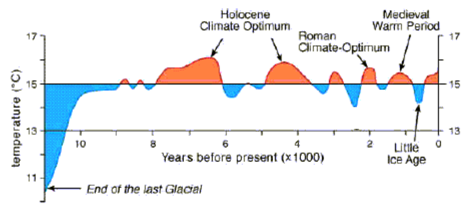
Australia had a carbon tax – after a couple of years, that government went down to defeat and the carbon tax was repealed. The UK and EU have carbon taxes and have added subsidized wind and solar farms to the grid while phasing out coal. Now millions suffer in heat-or-eat poverty – a growing problem in Ontario.
None of the climate change measures in the world have reduced carbon dioxide or greenhouse gas emissions. Heavy industry has just moved offshore to places with fewer environmental controls and carbon traders have had a field day. Interpol’s guide-to-carbon-trading-crime reports sometimes emissions are upped, just to make more money.
In a 2007 Baker Mackenzie power point on how to make money using Certified Emissions Reduction credits shows that the World Bank and a private fund made $1.2 billion 23 minutes trading carbon from Chinese factory pollution. No wonder no one wants to reduce emissions in China – the dream of turning dross to gold has come true – to earth’s detriment.

Also good background – Conning the Climate: http://citizensclimatelobby.org/files/Conning-the-Climate.pdf
Ordinary people get poor from the carbon taxes and paying wind/solar subsidies, while institutional investors, who are deeply invested in wind, solar and clean-tech (despite clean-tech being called an “L-for-Loser” investment by the past chief investment officer of CalPERS), can profit from 20 year contracts that take subsidies from your pocket for little electrical power in return.
“According to Mr. Dear, a Calpers fund devoted to clean energy and technology which started in 2007 with $460 million has an annualized return of minus 9.7% to date….[ he said] “What’s going to make these markets really take off is if the price of alternative energy drops below the price of a carbon-energy equivalent. You will no longer need incentives or anything else….If that’s not going to happen, somebody has to step in and either raise the price of carbon or lower the cost of the alternatives.”
http:// www. wsj. com/articles/SB10001424127887324557804578374980641257340
Indeed, in Alberta, one can see in 107-submission_nei-investments_-investor-collaboration_signatories to the Alberta Climate Plan signed by 120 institutional investors, some of whom financed environmental groups to denigrate the oil sands and coal use, are directing government policy, over the desires of the Alberta electorate.
They don’t live here. They won’t have to pay. They won’t face the risk of blackouts as Alberta loses affordable, reliable power capacity from coal. They’ll just profit while Albertans perish.
Is that democracy?

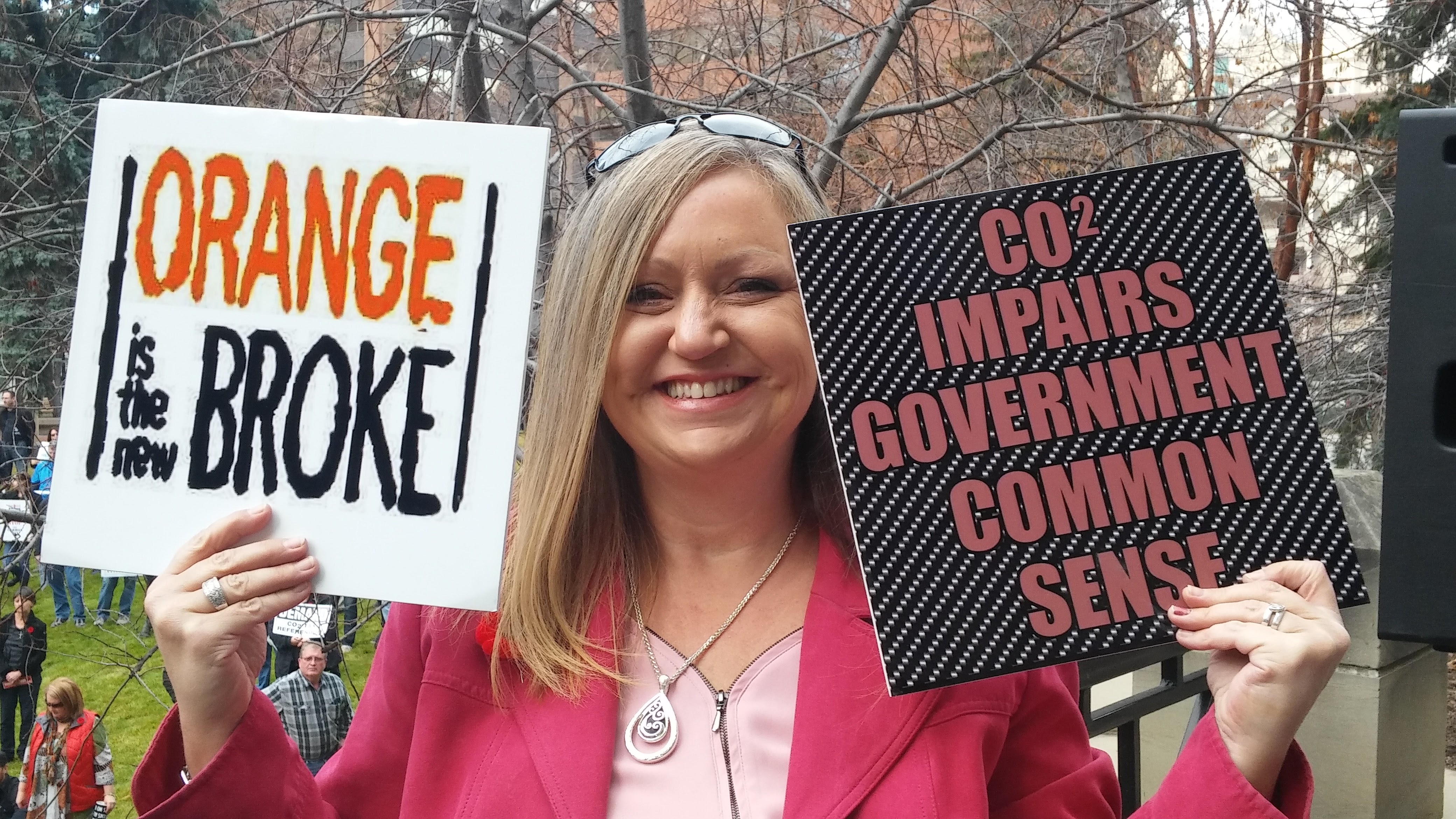

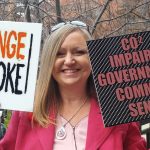


Friends of Science? Can you explain how you are “friends” of science when you use science as tool to win votes? Science is way of knowing and independent of politics, specifically, in this case flavoured and filtered to the WildRose party’s political goals and aspirations. The responsibility of scientists is to explain science to non-scientists in a way that is easy conceptually thus easy to understand. In the past, and as an entity, science and its practitioners have done a poor job at explaining some of the complex concepts of scientific phenomena precipitating the need for internal and external consistency in its explanation. This is both a challenging and ultimately necessary endeavour for science as a whole.
I attended the rally on Saturday in Calgary and was appalled by some of the “science” being disseminated.
I will only cover one area for brevity at this point, that of wind power, which you are fervently against since it provides competition. Yet only slightly marginally to coal and natural gas generated electrical power. May we all be reminded that on your website the mention of wind power and ultimately its supply variability is a strong point of condemnation of its use as an energy alternative. A few items of note follow based on some simple research I conducted to try and expand and challenge your claims:
1) There are storage methods for wind power including compressed air and hydrogen cells, other than batteries that you did not mention.
2) Existence of wind powered turbine technology promotes new R&D opportunities for battery, and hydrogen cell technology in addition to the ongoing advancement of wind powered electric generation, for applications outside of wind power electrical generation.
3) Black outs or Brown outs because of variability? With the above collection methods, the electricity can be stored and the variability thus removed during periods of turbine non operation.
4) A second control of variability for electrical power on a grid system is that it is very highly controlled and spikes in supply are uncommon when compared to demand. The nature of both results in a very delicate balance and in need of precise control engineering and systems considering electrons travel at the speed of light.
5) With the marginal nature of wind and solar tech compared to coal and gas at this point in its evolution, amplitude spikes from these sources even daily would be a marginal shock to the overall electrical grid system.
In addition to the above, the fact that the use of fossil fuels is literally an evolutionary direction our species has taken and it is agreed that it needs to remain, snubbing potential alternatives as serious threats to that direction is overstated completely if only to garner votes from the layman or the misinformed. This ties back to my earlier comment about scientists communicating good science to non-scientists, not just bits and pieces that bolster the appearance and palatability of your political objectives.
Thank you for your comprehensive comment. Friends of Science is not affiliated with any political party. We were not associated with the Alberta Wide Rally’s selection of speakers – we were simply asked if we would like to speak on the climate plan, climate science and carbon tax. We agreed to speak. We agree that scientists need to make science accessible to average citizens – so our website has various commentaries and reports ranging from simple to highly technical. Wind’s intermittent and unreliable nature is its worst quality. Let us address your points one by one and it is true we did not discuss these points.
1) there is NO storage method for wind that is at any reasonable scale for use – even large pumped storage or battery storage in Germany and Norway are miniscule comopared to demand. Please refer to a non Friends of Science source – Euan Mearns is a good one. http://euanmearns.com/the-holy-grail-of-battery-storage/
2) existence of wind turbine tech can do that R&D at a small scale without imposing triple the costs for power on Albertans. Wind has been subsidized as an ‘almost-there’ technology for about 40 years and still has not successfully met the claims. Prof. MJ Kelly of Cambridge: http://journals.cambridge.org/action/displayAbstract?fromPage=online&aid=10333234&fulltextType=RV&fileId=S2329222916000039 Finadvice report by renewables addvocates addresses the number of increased interventions on the grid due to reneewables: http://www.finadvice.at/files/germany_lessonslearned_final_071014.pdf
3) The proposed collection facilities are not at scale and will not stop blackouts. http://euanmearns.com/blowout-week-147/ Insurer Allianz notes that wind and solar create grid instability and increases the risk of poetntial blackouts. Our most recent report “Dire Consequences” explains how, in the absence of immediate construction of natural gas capacity, Alberta could soon face a lack of capacity leading to blackouts – as happened in the UK. https://friendsofsciencecalgary.wordpress.com/2016/09/29/dire-consequences-destroying-albertas-affordable-power-advantage/
4) To integrate wind and solar to the grid, due to their variability, we have estimates from industry experts at $1 million per MW. The AESO works hard to make sure we don’t have blackouts – this will be an untenable challenge if trying to put 30% GENERATION of reneables on the grid – this does not exist anywhere in the world to our knowledge.
5) You are wrong. With the addition of 5,000 MW (as proposed by the gov’t) the total would be 6,500 MW wind on the Alberta grid. Wind ramps up and down at will. The problem with wind is its randomness, wind is completely uncorrelated with demand. If they add another 5,000 MW then the total would be 6,500 MW. Typically this amount of wind would randomly experience 80% or higher ramps one or more times per week. This would be the equivalent of ramping 6.5 Sheppard plants from off to full to off again. These plants are unable to do this over the long term. They may end up having to put in simple cycle units instead which, from a CO2 perspective, would pretty much defeat the purpose of adding wind.
If anything, it is the wind people who are misleading average citizens by saying wind is ‘clean, green and free’ when it is none of these. https://youtu.be/PiAAfpVRLJc
Renewable Energy will overtake all other sources of electricity generation sooner than some may think.
We’d love to hear how. So far fossil fuels drive the world at 81%….renewables 1.4% https://friendsofsciencecalgary.wordpress.com/2016/11/14/facts-and-fallacies-on-world-fossil-fuel-use-vs-renewables/ All renewables are MADE from oil, coal and natural gas/byproducts. So? https://friendsofsciencecalgary.wordpress.com/2016/05/31/why-renewable-energy-cannot-replace-fossil-fuels-by-2050/ Please explain.